The lush island of Yakushima boasts the nation’s highest annual rainfall, Kyushu’s tallest mountain and is said to be inhabited by 10,000 people, 10,000 deer and 10,000 monkeys. Visitors soak up the quiet natural beauty of the island before returning to their busy lives, while others, attracted by the slow pace and simple life, call Yakushima home.

Much has changed since Yakushima attained World Heritage status in 1993, thrusting the mysterious island into the consciousness of global travelers. Today more than 400,000 people visit Yakushima each year. Most come to trek through ancient cedar forests, view leatherback turtles laying their eggs on white sand beaches, enjoy seaside hot springs and photograph the cascading waterfalls dotting the island.
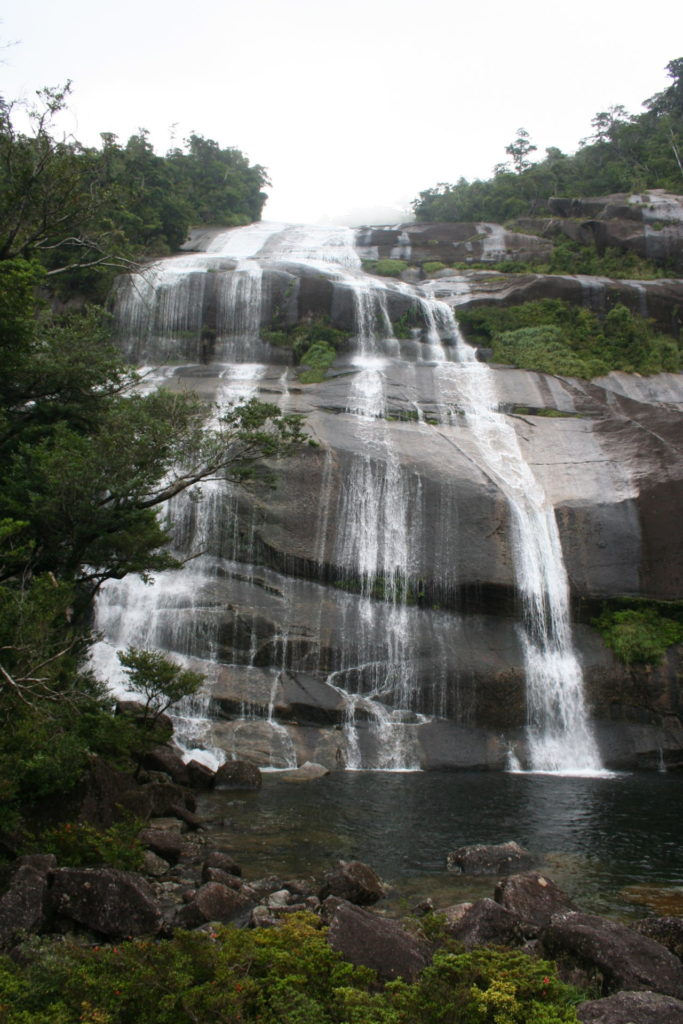
For fans of Japanese master animator Hayao Miyazaki, a pilgrimage to the Shiratani Unsuikyo, the primeval forest that provides the backdrop for his film “Princess Mononoke,” is a rite of passage. For some older Japanese, seeing the 10,000-year-old Jomon Sugi is a dream realized, while scientists and naturalists come from around the world to study the virgin forests and rave about the abundant flora and fauna.
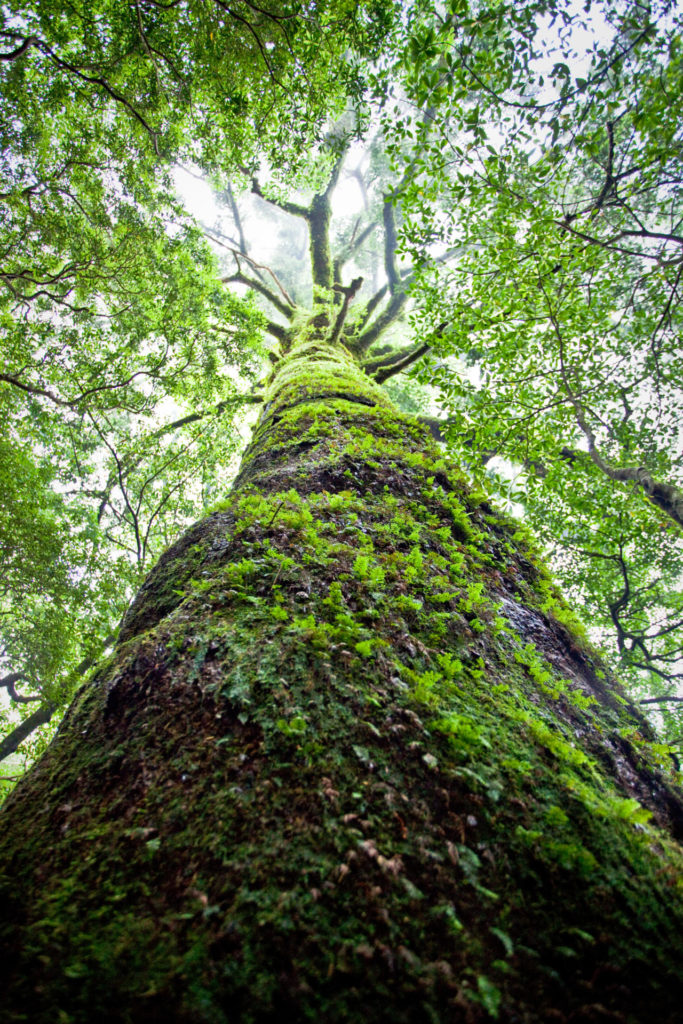
Much of my travel on Yakushima was unscripted, influenced by the weather, free campsites and the proximity to local onsen. My only plan was the epic two-day overland traverse from Arakawa Dam to the highest point in Kyushu, 1,936-meter Miyanoura-dake that finishes at the Yakusugi Cedar Land Forest.
It is a good idea to start the walks early (before sunrise if possible), as there are amazing viewpoints on the way, such as Jomon Sugi and Yakeno-sansaro Junction. Here you hike the windblown knife-edge ridge of the Miyanoura Highlands between large stones.
My traveling partner and I sought refuge from the howling wind at Hiraiishi; we crawled into our sleeping bags and burrowed under this large rock while deer checked in on us throughout the night.
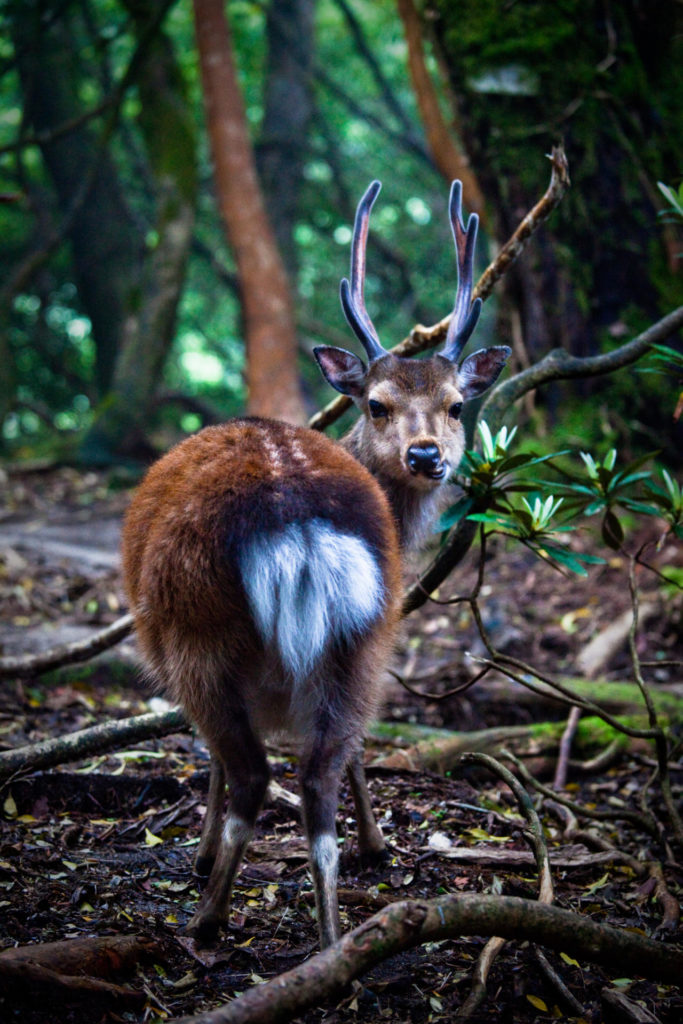
There are more challenging routes to the roof of Yakushima, like the steeper climb from Nagata or the longer trek from Onoaida, but the Anbo mountain trail entrance is recommended for your first visit. Early morning bus service is available.
The trails are well marked in English, and local maps are accurate but, if you want to be safe and learn more about the history and the local nature, I highly recommend hiring one of the many knowledgeable licensed guides.
I had the opportunity to meet some locals who chose to lay down roots and call Yakushima home. Ryuji and Aki Fujiyoshi arrived on Yakushima in 2006 for an extended honeymoon and are now the friendly owners of Nomad Café. Their place is located in the shadow of the impressive rock-faced Mochomu-dake.
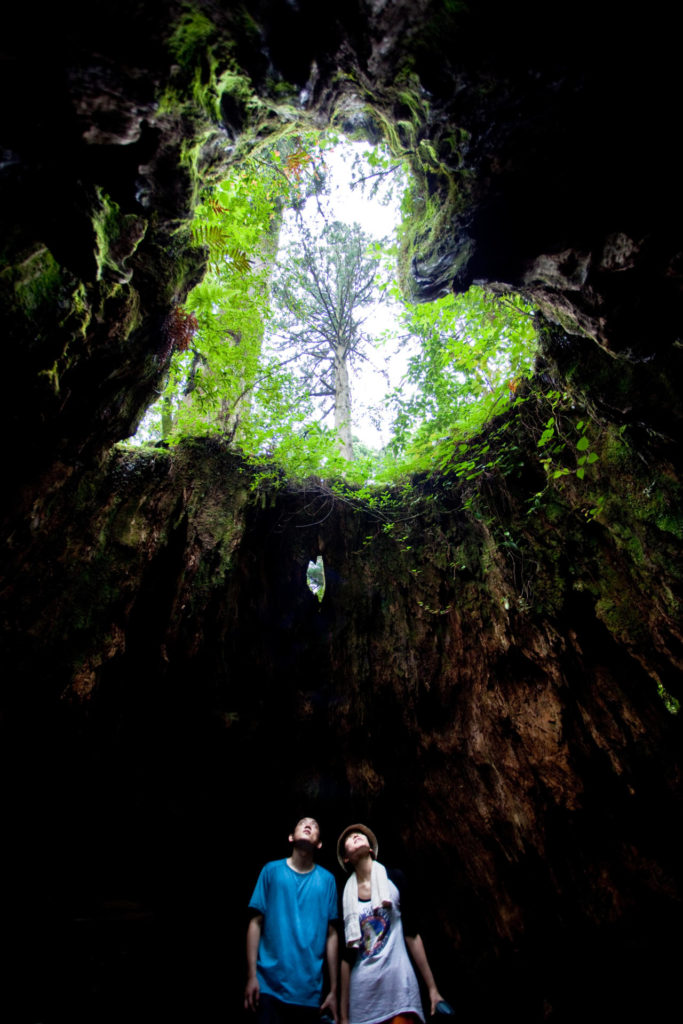
They had a vision to move from Kanagawa Prefecture and live in the countryside. After numerous scouting trips, camping and exploring Japan, they decided Yakushima fit the image they were looking for. A beautiful place surrounded by mountains, sea and rivers.
While settling in and meeting new neighbors, they quickly realized just how close knit and dependent on one another are the islanders. They enjoy the slow pace and the relationships they’ve made with locals and travelers. The dream to build a café where people could meet, have a great cup of coffee and good food was realized when they found an old house in November 2007. Construction began three months later and, with Ryuji’s architectural background and Aki’s elbow grease, the Nomad Café opened six months later.
When I asked about some of the pros and cons of island life, Aki said, “In many ways you learn to be patient and not worry about little things. It has been OK to go without some luxuries such as 24-hour supermarkets and high-speed Internet. In fact, we really enjoy sharing meals at each others’ homes with neighbors on the island and having time to play music, practice yoga or go fishing.”
Thomas Näcke and his wife settled in the northwest village of Nagata in the spring of 2007 and stayed two years basking in what Thomas calls, “the abundant natural beauty and the kindness of the local people.”
I had met Thomas at a Minami-Izu sea kayak festival in 2003, and it was synchronicity to catch up with him again in this village of 500 souls. He says, “The local villagers welcomed us with open arms, with invitations to share their fields, fish, deer, bamboo sprouts and wild mushrooms.
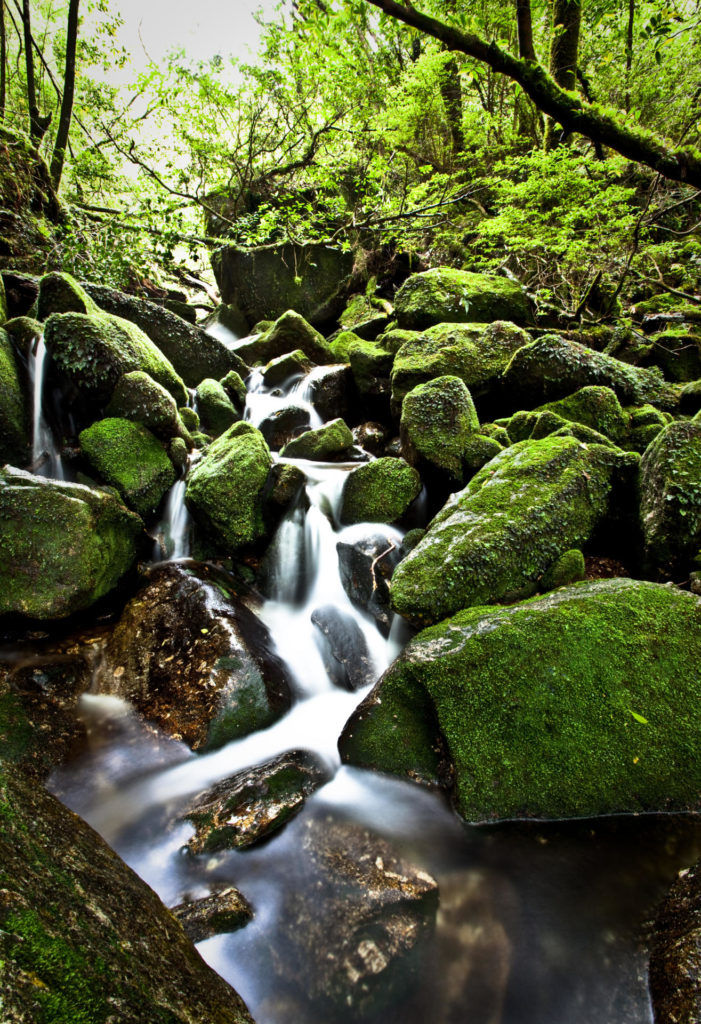
“Our landlord had an extraordinary memory of the old times and would often tell me stories about how they used to live. Others would take me out and show me how to chase amberjack (kanpachi) and where to collect shells along the granite coast further south.”
The ijūsha, or recent inhabitants, to the island are an eclectic group with many entrepreneurs and guides helping make Yakushima more accessible and travel friendly. Others are on more spiritual back-to-nature quests, perhaps following in the footsteps of the late poet Sansei Yamao (1938-2001) and his followers who founded a hamlet in the lush Shirako Valley near Isso.
As Thomas rightly said, “Many foreigners experience only Tokyo or Kansai, but living in rural Japan is very different, and Yakushima is an exceptional place to experience another side of Japan.”
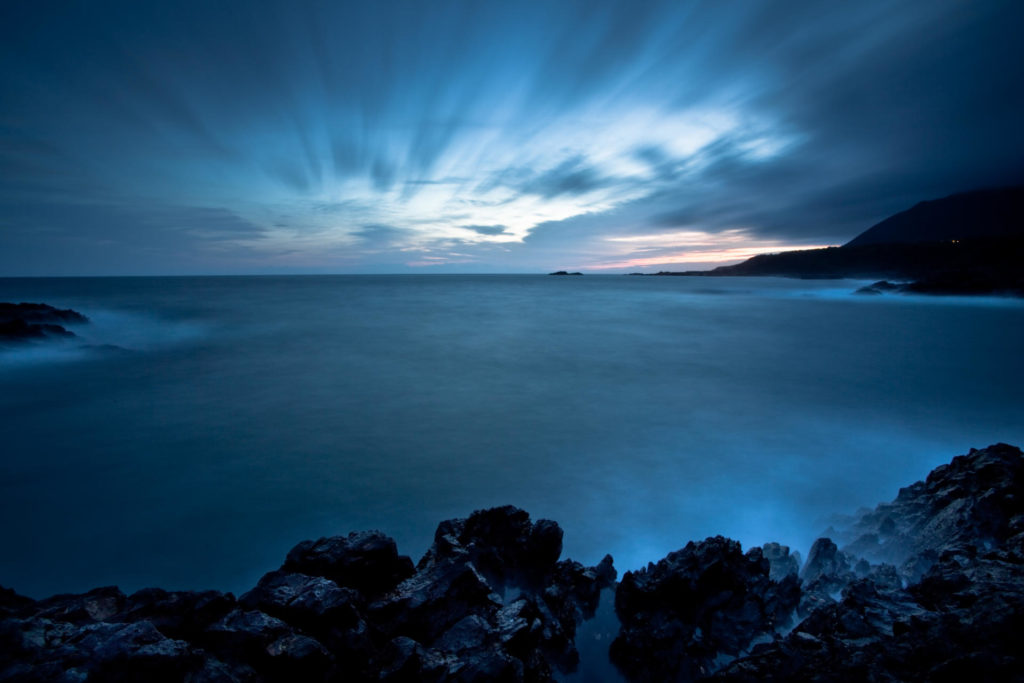
YAKUSHIMA – A to Z
Accommodation: Yakushima Guest House is a cheap place to stay and they offer free pick-up. Tel: 080-5215-2141
Beach: Inakahama Beach is the place to see turtles lay eggs and beautiful sunsets.
Bento: Shimamusubi, you can call ahead for early pick-up. Good value, vegetarian options available. Tel: (0997) 42-0770
Breakfast: Stax Café, open every day from 9:30 a.m. with standard western breakfasts. It’s a good place to wait for the ferry at Miyanoura Port.
Cafe: Nomado Café, located between Anbo and Onoaida on the coastal road noon-6:30p.m. / L.O. 5:30 p.m.. The curry-and-bagel set hit the spot after hiking and the desserts are homemade. Tel: (0997) 47-2851
Day Hike: Taikoiwa lookout via Shiratani Unsuikyo. (Mononoke Forest trek). Be prepared to get wet. The large rock that sounds like a drum when you beat on it emerges from the virgin forest and is often slippery from mist or rain. I nearly slid over into the abyss the first time I walked onto it. Give yourself three to four hours, taking breaks on the return, as the descent is more hazardous than the hike up.
Getting Around: The island by car or bicycle is relatively easy for the English-speaking traveler, as trailheads, signs and maps are nearly all bilingual, and there aren’t many roads anyway. Keep an eye out for Doraemon.
Getting There: There are daily JAL flights from Kagoshima Airport and assorted ferry services from Kagoshima and Tanegashima. I recommend the “Toppy” and “Rocket” jetfoils, which whisk you over the choppy water in about two hours from Kagoshima Port to Miyanoura and Anbo, the main ports on Yakushima. Be aware that typhoon weather can cause delays or cancellations. If you are traveling from Tokyo or Kansai, check out package tours, which include flights, accommodation and good rates on rental cars.
Izakaya: Jaraitei (meaning “no problem” in the local dialect) is owned and operated by the sweet and genki “retiree” Kaku Shisaku who serves delicious food. I wanted to stay the night.
Onsen: Yudomari seaside natural hot springs is a must visit. From the parking area, walk down the path away from the first baths toward the sea. There is another small pool often overlooked near the ocean. Bathing suits are optional and the temperature depends on the tides.
Rental Gear:Nakagawa Sports, the best-stocked outdoor shop on the island, has maps, rain gear for sale or rent and a helpful, knowledgeable staff.
Ryokan: Souyoutei on the shores of Inakahama beach. Traditional island style and family owned. Tel: (0997) 45-2819
Waterfall: Ōkawa. The drive along the quiet west coast through the small towns of Nakama and Kurio was wet, dark and middle-earth like. Bring rain gear and bags for cameras if you want to get close.
What to you need: Quality rain gear, water resistant boots and gaiters, backpack with rain cover, hat for rain or sun, water bottles.




